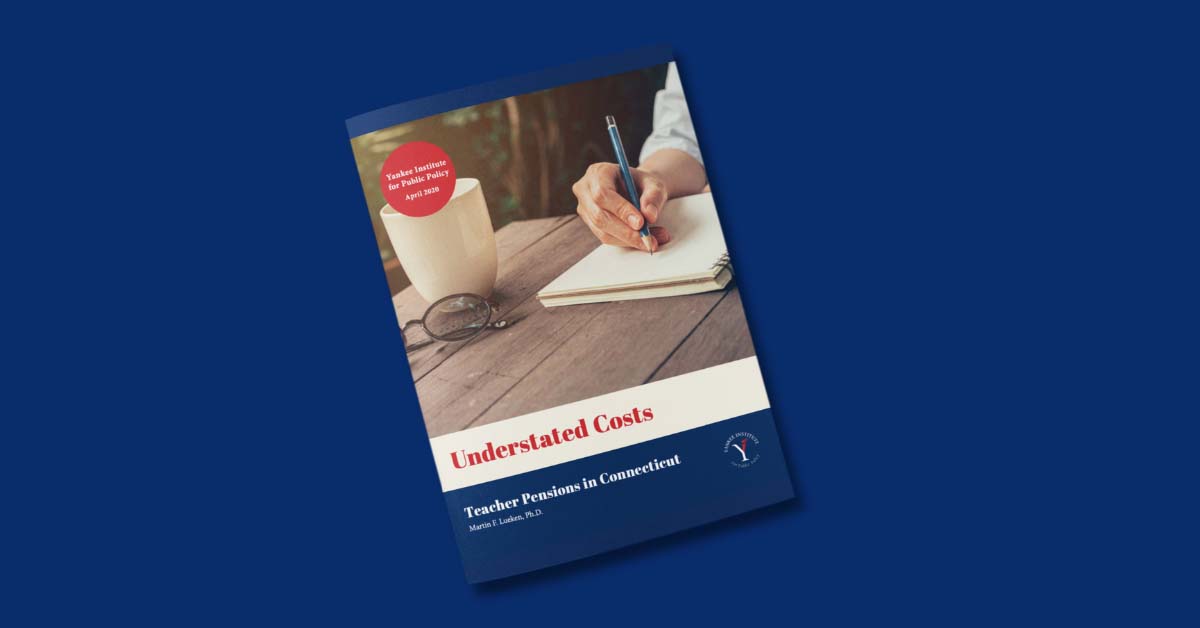Executive Summary
By its own measures, the Connecticut State Teachers’ Retirement System has unfunded liabilities of almost $17 billion; the system has 52 cents for every dollar needed to pay for benefits accrued by its members as of June 30, 2018. The gap between what the system owes for accrued benefits and the assets it has on hand to pay for obligations represents more than $31,000 for each public school student in the state.
Given how the plan values pension benefits, unfunded liabilities are likely understated and do not accurately reflect the true investment risk and cost. This paper estimates CTRS unfunded liabilities for a range of discount rates. Because public employees in Connecticut have very strong protections in place for their pension benefits, the value of benefits are significantly higher than stated (by up to twice the value reported under the assumed discount rate). Unfunded liabilities may be more than three times what is stated, up to $50 billion.
To be clear, these estimates under lower discount rates are not based on investment expectations and asset management. Rather, they reflect the risk of the plan and the reality that pension promises have strong protections. The argument for using a lower discount rate to value liabilities is independent from any assertions made about expectations for investment returns. It is important for policymakers and stakeholders to realize that any discussion about expected investment returns is separate and distinct.
Below are some guidelines for policymakers and pension plan trustees to increase transparency and intergenerational equity:
• Report unfunded liabilities under a wider range of discount rates. Under current Governmental Accounting Standards Board reporting requirements, CTRS reports its net pension liability using its current discount rate, plus the liability using discount rates that are 1 percentage point higher and lower than the current rate. In addition, the Second Exposure Draft of the Proposed Revision of Actuarial Standard of Practice (ASOP) No. 4 includes recommendations for pension plans to disclose a low-default-risk obligation measure of benefits. Pension plans in Connecticut like CTRS should, at minimum, report their liabilities under a broader range of discount rates, including a risk-free rate, and disclose the protections and guarantees that public workers have for pension benefits. Public pension plans do not have to confine public reporting to GASB requirements.
• Unlink assumptions for the discount rate and investment expectations. Most or all defined benefit plans base the discount rate on the assumed rate of return for investments, even though they are not obligated to do so. Every state and even different pension plans face different circumstances that can affect funding differently. In some cases, a 7% or 8% assumption for investment returns may be appropriate. Although the current 6.9% assumed rate of return on investments for CTRS may be appropriate for the plan’s circumstances, interest rates in the 7% to 8% range are not appropriate for discounting future liabilities.
• Base contribution requirements on a lower discount rate. Contribution requirements should be based on a rate that reflects the protections in place for workers’ pension benefits. They should not be based on investment returns, unless the assumed rate of return on investments is in line with protections in place for benefits. In Connecticut, pensions receive property right protections. The current 6.9% assumed discount rate remains too high. Liabilities should be discounted at a rate that is closer to a risk-free rate.
• Be proactive about not pushing costs onto future taxpayers. Funding in K-12 education is not just an accounting exercise. It is also a reflection of our values. This notion can easily be applied to public pensions. When pension plans incorrectly measure the value of benefits, they place future taxpayers at risk of having to pay legacy costs when plans are not completely pre-funded. A previous paper by Yankee Institute showed how pension benefits are distributed unevenly across different groups of teachers. Our pension plans today also distribute costs unevenly across generations of taxpayers.

